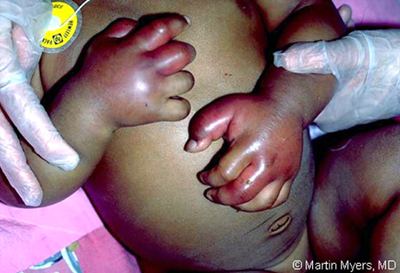Salmonella is closely related to the Escherichia genus and are found worldwide in cold- and warm-blooded animals (including humans), and in the environment. They cause illnesses like typhoid fever, paratyphoid fever, and foodborne illness.
The genus Salmonella was ultimately named after Daniel Elmer Salmon, an American veterinary pathologist. While Theobald Smith was the actual discoverer of the type bacterium (Salmonella enterica var. Choleraesuis) in 1885, Dr. Salmon was the administrator of the USDA research program, and thus the organism was named after him by Smith. Smith and Salmon had been searching for the cause of common hog cholera and proposed this organism as the causal agent. Later research, however, would show that this organism (now known as Salmonella enterica) rarely causes enteric symptoms in pigs, and was thus not the agent they were seeking (which was eventually shown to be a virus). However, related bacteria in the genus Salmonella were eventually shown to cause other important infectious diseases. The genus Salmonella was finally formally adopted in 1900 by J. Lignières for the many species of Salmonella, after Smith's first type-strain Salmonella cholerae suis.
 |
| Salmonella Infection |
Salmonella species are facultative intracellular pathogens that enter cells via macropinosomes.
This is a group consisting of potentially every other serotype (over a thousand) of the Salmonella bacterium, most of which have never been found in humans. These are encountered in various Salmonella species, most having never been linked to a specific host, can also infect humans. It is therefore a zoonotic disease.
The organism enters through the digestive tract and must be ingested in large numbers to cause disease in healthy adults. Gastric acidity is responsible for the destruction of the majority of ingested bacteria.
The infection usually occurs as a result of massive ingestion of foods in which the bacteria are highly concentrated similarly to a culture medium.
However, infants and young children are much more susceptible to infection, easily achieved by ingesting a small number of bacteria. It has been shown that, in infants, the contamination could be through inhalation of bacteria-laden dust. After a short incubation period of a few hours to one day, the germ multiplies in the intestinal lumen causing an intestinal inflammation with diarrhea that is often muco-purulent and bloody. In infants, dehydration can cause a state of severe toxicosis. The symptoms are usually mild. There is normally no sepsis, but it can occur exceptionally as a complication in weakened elderly patients (e.g., Hodgkin's disease). Extraintestinal localizations are possible, especially Salmonella meningitis in children, osteitis, etc.
Enteritis Salmonella (e.g., Salmonella enterica subsp. enterica serovar enteritidis) can cause diarrhea, which usually does not require antibiotic treatment. However, in people at risk such as infants, small children, the elderly, Salmonella infections can become very serious, leading to complications. If these are not treated, HIV patients and those with suppressed immunity can become seriously ill. Children with sickle cell anaemia who are infected with Salmonella may develop osteomyelitis.
In Germany, Salmonella infections must be reported. Between 1990 and 2005, the number of officially recorded cases decreased from approximately 200,000 cases to approximately 50,000. It is estimated that every fifth person in Germany is a carrier of Salmonella. In the USA, there are approximately 40,000 cases of Salmonella infection reported each year. According to the World Health Organization, over 16 million people worldwide are infected with typhoid fever each year, with 500,000 to 600,000 fatal cases.